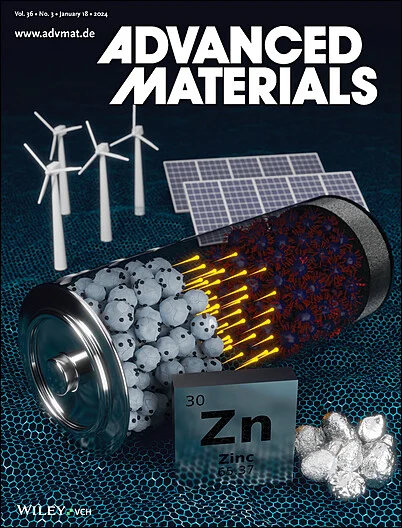Eye-Drop Nano-Formulation of Catalase Self-Assembled with Thiolated Chitosan for Effective Treatment of Dry Eye Disease
IF 27.4
1区 材料科学
Q1 CHEMISTRY, MULTIDISCIPLINARY
引用次数: 0
Abstract
Dry eye disease (DED), the most prevalent ophthalmological condition worldwide, can cause severe ocular discomfort and even visual impairment. Effective yet safe therapeutics for severe DED are still highly demanded. Herein, considering the important role of excessive reactive oxygen species (ROS) in triggering DED, an eye-drop nano-formulation of catalase (CAT) self-assembled with cysteine-modified chitosan (CS-Cys) is designed for DED treatment. Upon eye-drop administration of CS-Cys/CAT nanoparticles, CS-Cys can form disulfide bonds with abundant thiols in the mucin layer of the tear film, anchoring catalase to the corneal surface. Thus the excess ROS accumulated on the ocular surface can be effectively eliminated, resulting in a regulated tear microenvironment. In mouse and rabbit models, it is verified that CS-Cys/CAT eye drops can offer excellent therapeutic effects, especially in promoting the recovery of damaged epithelium and increasing tear secretion. Remarkably, CS-Cys/CAT eye drops showed notably better therapeutic performance than clinically used cyclosporin and dexamethasone, as well as several new DED drugs in clinical trials. Thus, the work presents a unique nanoparticulate eye-drop-based ocular delivery system to allow prolonged ocular retention of protein therapeutics, and such nanoformulation formulated by fully biocompatible/biodegradable components possesses significant translational potential for effective and safe DED treatment.

求助全文
约1分钟内获得全文
求助全文
来源期刊

Advanced Materials
工程技术-材料科学:综合
CiteScore
43.00
自引率
4.10%
发文量
2182
审稿时长
2 months
期刊介绍:
Advanced Materials, one of the world's most prestigious journals and the foundation of the Advanced portfolio, is the home of choice for best-in-class materials science for more than 30 years. Following this fast-growing and interdisciplinary field, we are considering and publishing the most important discoveries on any and all materials from materials scientists, chemists, physicists, engineers as well as health and life scientists and bringing you the latest results and trends in modern materials-related research every week.
 求助内容:
求助内容: 应助结果提醒方式:
应助结果提醒方式:


